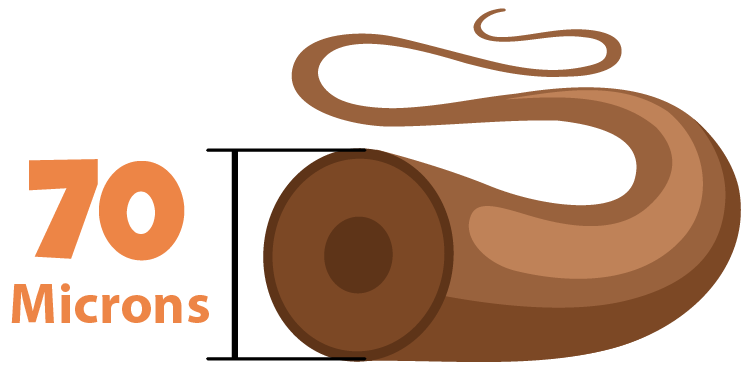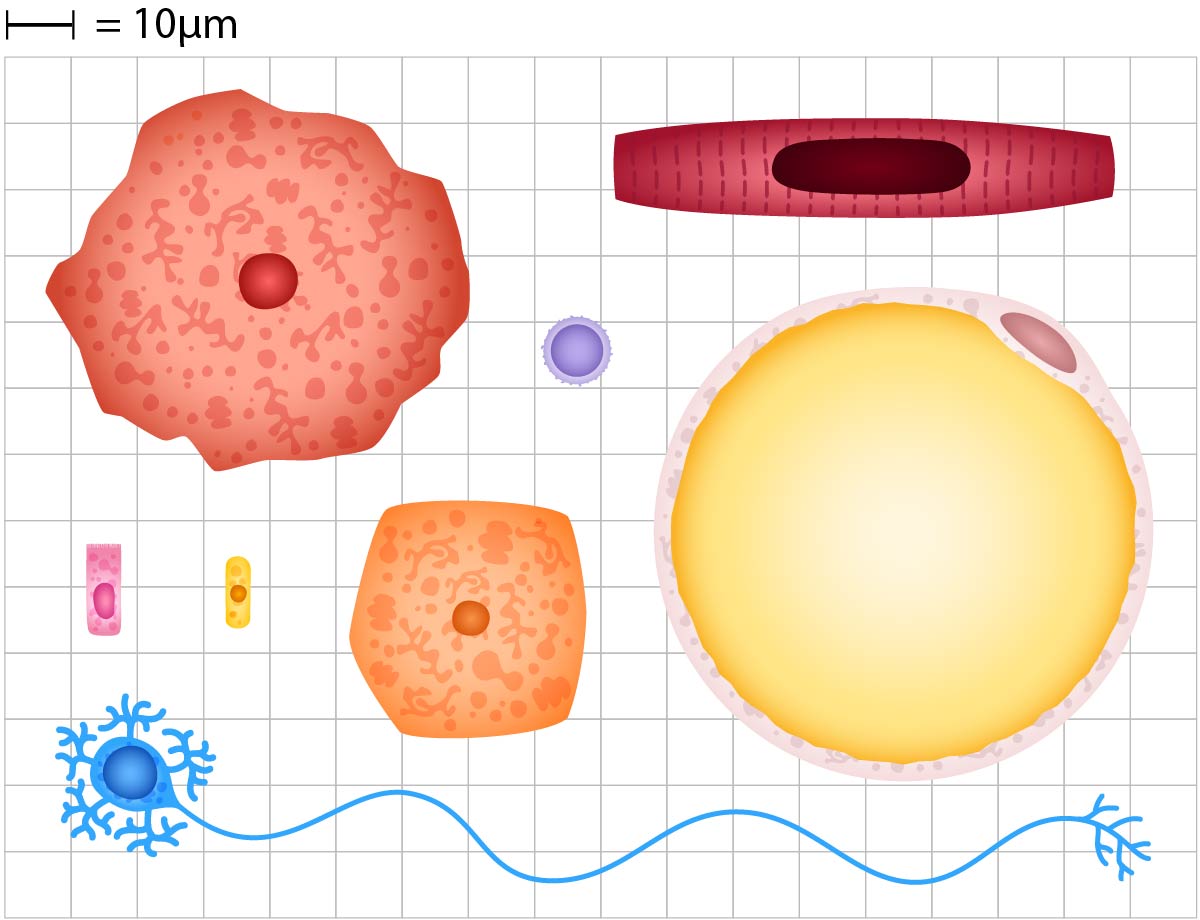Hello! I'm Roberto, the newest research assistant in Dr. Biology's lab. Our lab specializes in researching cells in the human body, including cancer cells. I'm currently studying how different cells look and what they do when they're working correctly.
Cells come in many different shapes and sizes. It's a good idea to learn how to recognize some of the cells of the human body. That way, if our samples get mixed up by accident or we receive unidentified samples, we can easily identify what type of cells we're looking at just by their shape and size.
Click on the cells below to learn more about them. Your challenge - can you discover the role of each cell type, and how its size and shape relate to its role?


